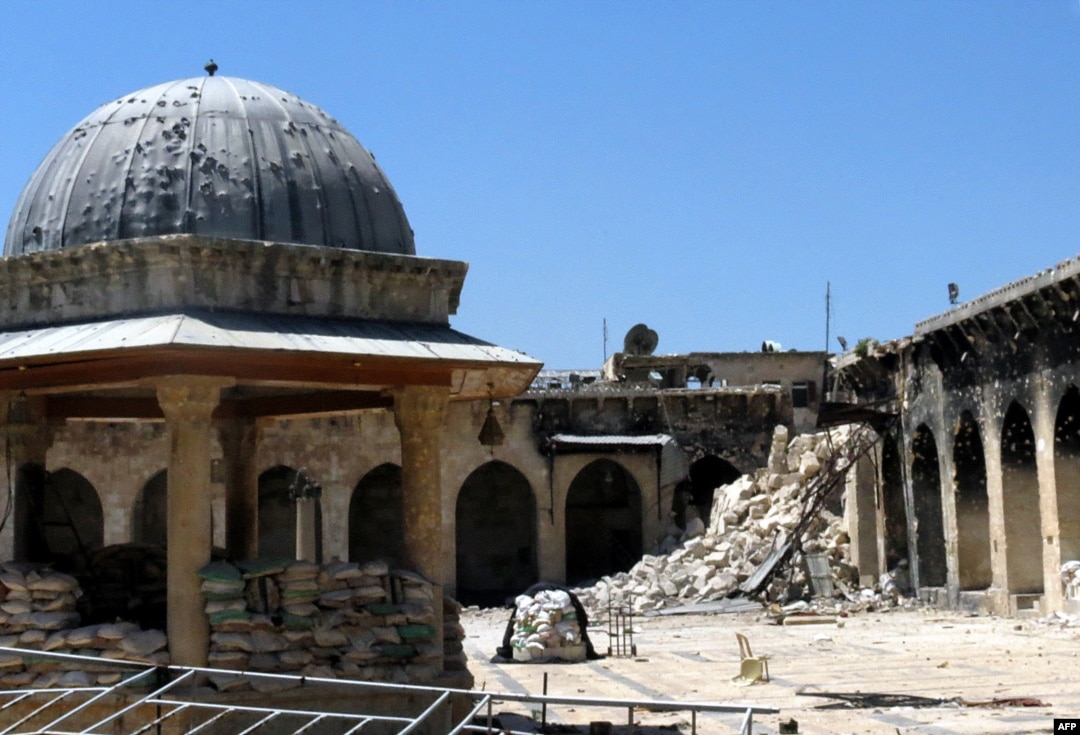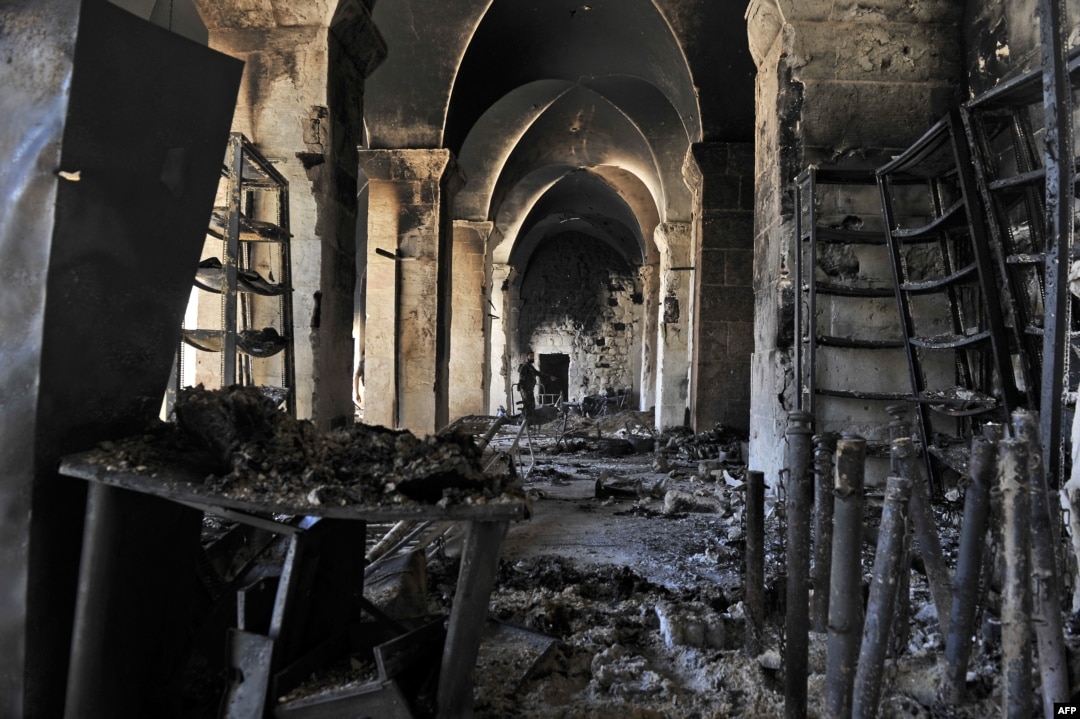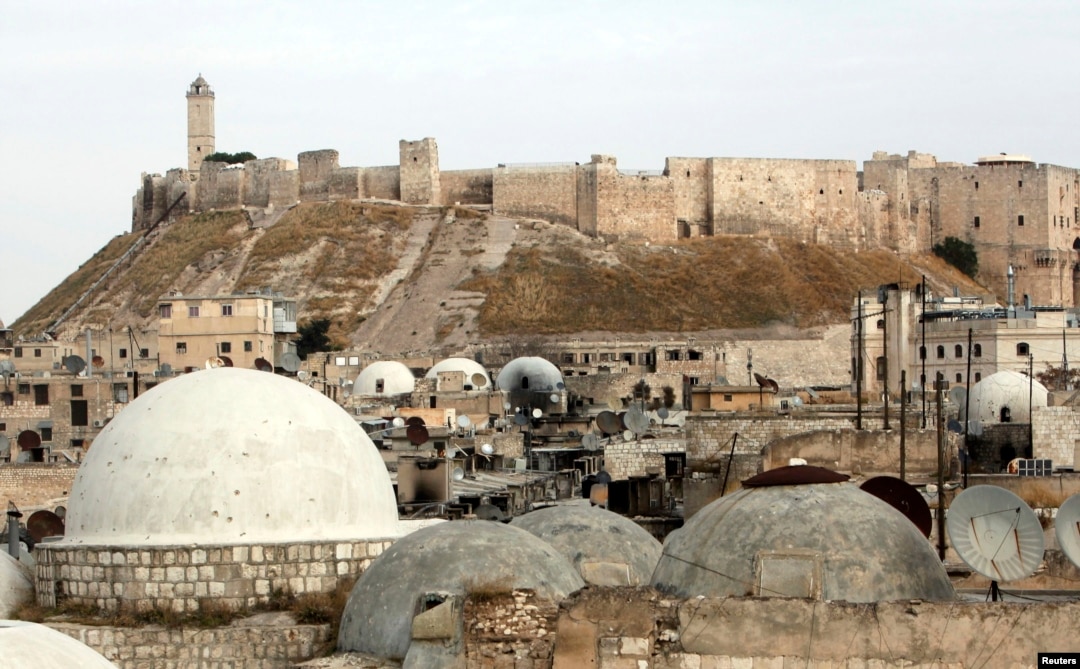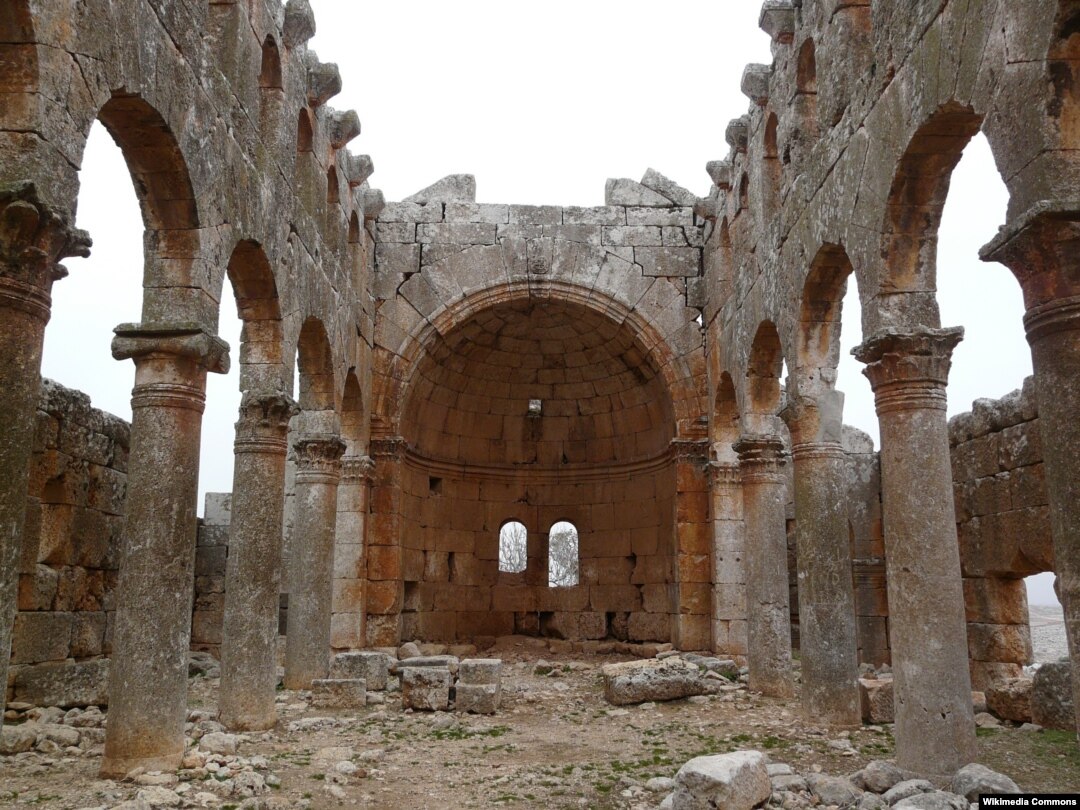UNESCO Says Syria's Cultural Heritage Being Devastated

The rubble of the minaret of Aleppo's ancient Umayyad Mosque, located in the UNESCO-listed Old City of the northern Syrian city, after it was blown up on April 24, 2013. The iconic mosque in Aleppo's labyrinthine Old City has been a key battleground since July 2012, with rebels seeking the ouster of Bashar al-Assad's regime laying siege twice but each time managing only to keep control for less than 48 hours.

A burnt section of the Umayyad Mosque in the old city of Aleppo, October 14, 2012

The Aleppo castle where pro-government forces are based in the Old Town of Aleppo on November 2, 2012

A view of the Mushabbak Basilica, in Aleppo, in 2010
The courtyard of the Umayyad Mosque in old Damascus, 2010. The Umayyad Mosque, also known as the Grand Mosque of Damascus, was built on the Christian basilica dedicated to John the Baptist since the time of Roman Emperor Constantine I.
Damascus's Umayyad Mosque, with a detail of the mosaic of the Eagle Dome, 2010
The Kisan Gate located on the Old Damascus walls, 2010
Kharab Shams Basilica in northwestern Syria, 2009
A general view of the 12th-century Crac des Chevaliers Castle and the adjacent village of Al-Hosn in the Homs region on August 19.
A rebel takes position at the Crac des Chevaliers Castle near the village of Azzara on the outskirts of the city of Homs on June 28, 2012.
The Roman ruins of Palmyra, 220 kilometers northeast of the capital, Damascus, in 2010
An ancient village in northwest Syria. The Dead Cities, or Forgotten Cities, are a group of 700 abandoned settlements in northwest Syria between Aleppo and Idlib. Around 40 villages grouped in eight archaeological parks situated in northwestern Syria provide insight into rural life in Late Antiquity and during the Byzantine period. Most villages that date from the first to seventh centuries were abandoned between the eighth and 10th centuries.

